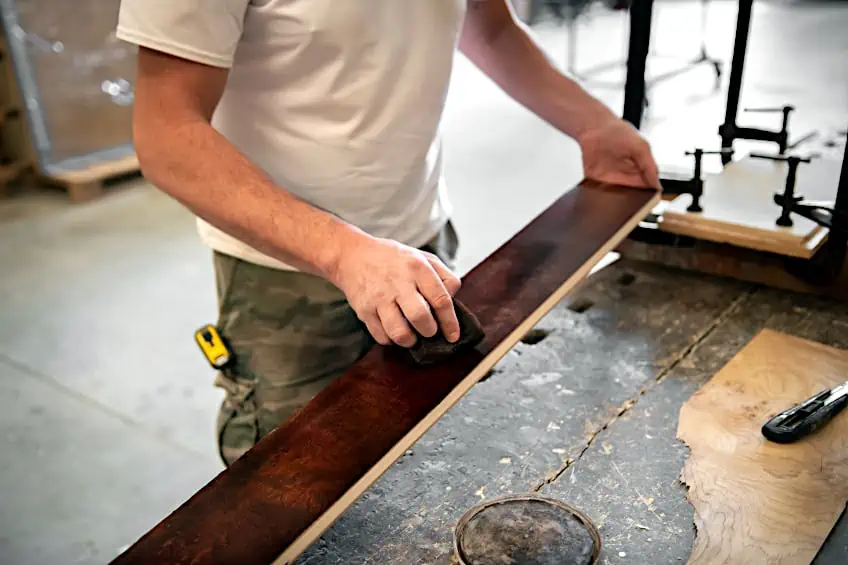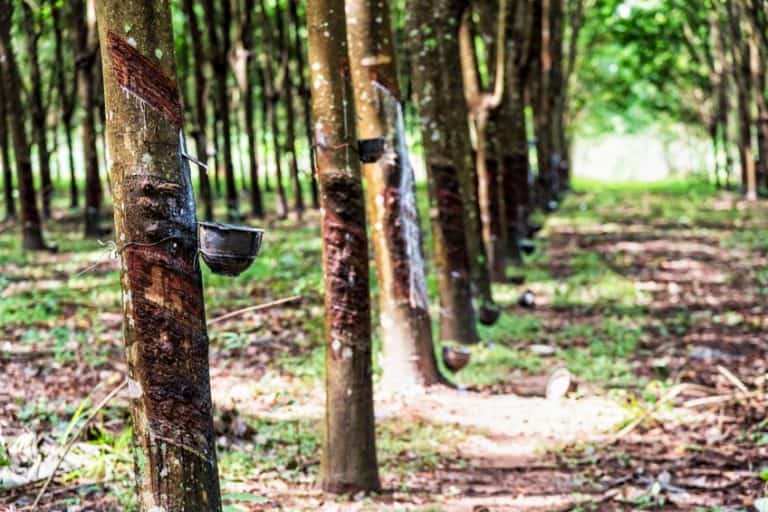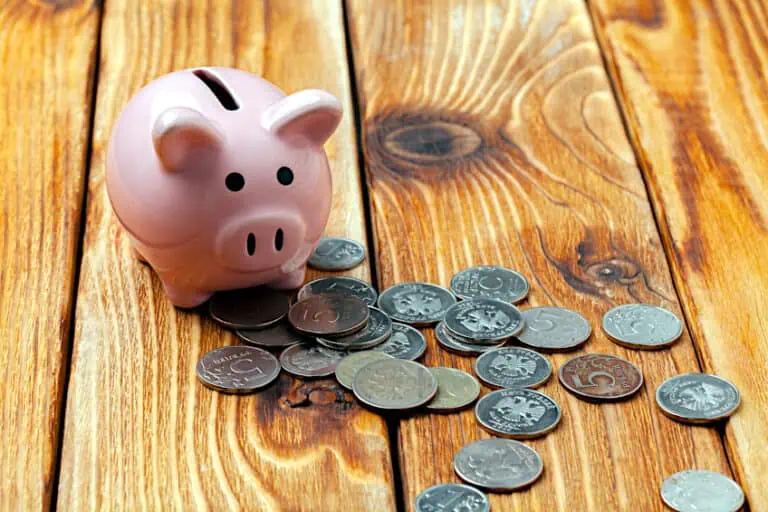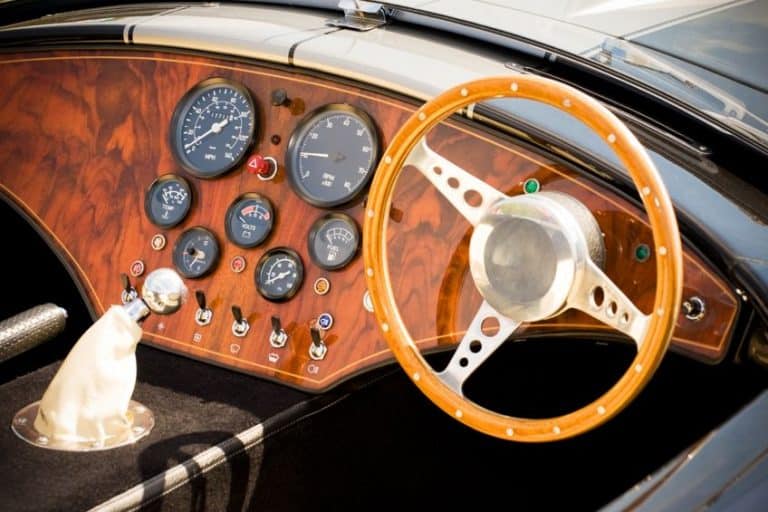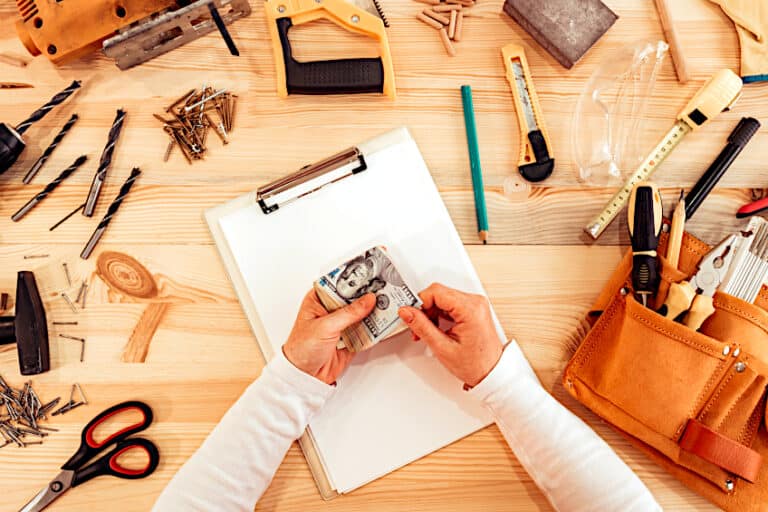Can You Stain MDF? – Tips for Finishing Engineered Wood
Thanks to advancements in technology and production processes becoming cheaper, there are a ton of materials to choose from. This is especially true when it comes to wood-crafting projects, as the advent of engineered woods and purely synthetic materials has provided us with a plethora of building materials. One of the most popular engineered woods used to date has to be MDF, and considering its pricing, durability, and availability, this comes as no surprise. That being said, let’s have a look at what MDF is, what it is used for, and whether or not you can stain MDF wood.
What Is MDF Board?
What is MDF? MDF is an abbreviation for medium-density fiberboard. It is one of many materials that have come to be known as “engineered woods” Engineered woods, unlike solid wood boards that you’d harvest directly from a tree, is manufactured from a variety of materials with wood being the primary component of their composition.
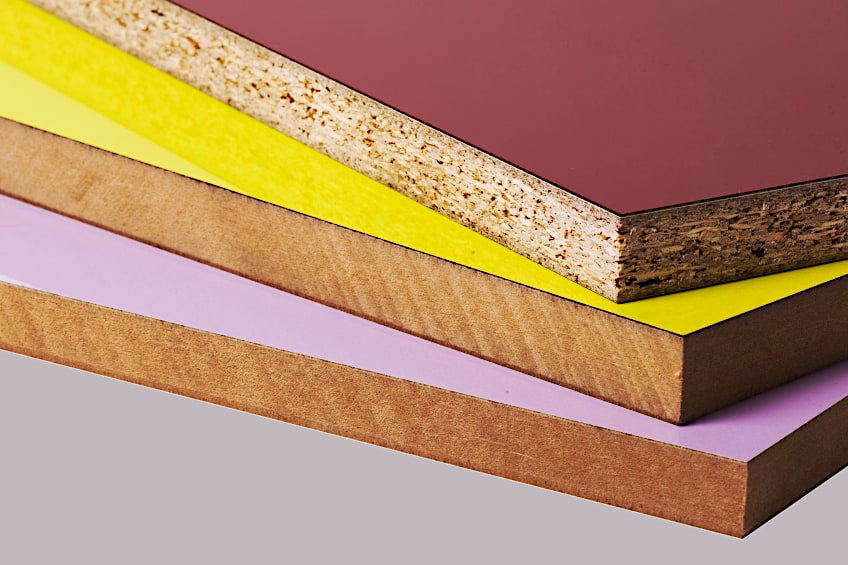
Although there are some variations, the method of producing engineered wood tends to follow the same formula. Wood chips or sheets are combined with a resin and heat pressed into the desired form. Engineered woods are available in various formats ranging from the raw product where the texture is visible to types coated in veneers that include natural woods and plastic and vinyl-based laminates.
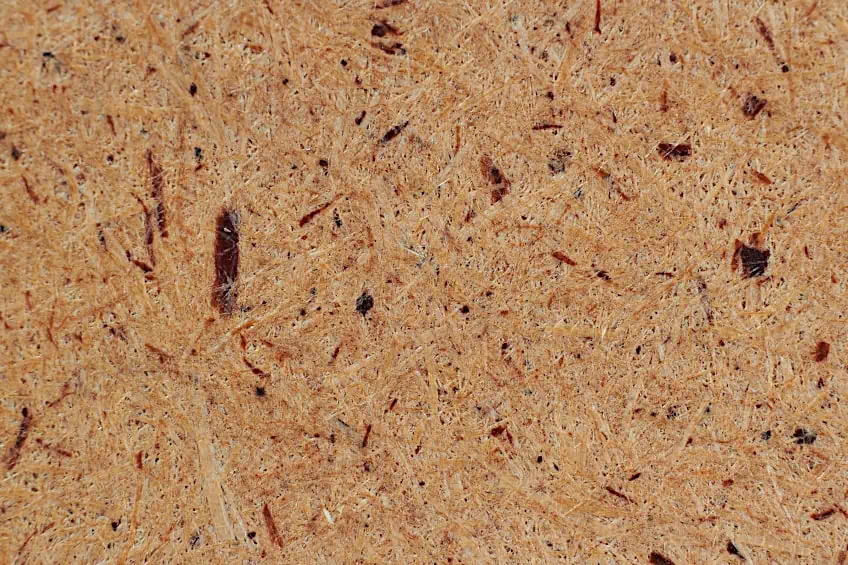
MDF in particular is created by gathering a bunch of wood shavings and compressing them together. Resin is then added to the particles to ensure that they stick together during and after the compression process, and then heat is added to ensure that wood shavings achieve the desired shape once the molding process has been completed.
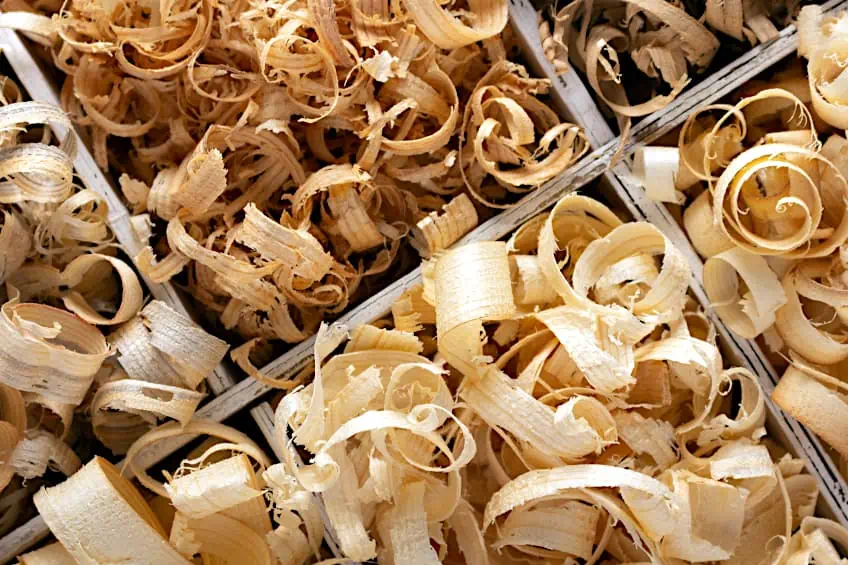
MDF is often used as an affordable and more readily available alternative to solid wood board. It can be used for a variety of applications depending on the grade of MDF you have available to you, although you will typically find MDF in light-duty, non-load bearing applications. MDF is commonly used in the creation of cabinetry, shelving, cupboard doors, countertops, doors, and runners.
Another characteristic of MDF that makes it so popular is the fact that it can be made to suit virtually any application. The composition of the board can be manufactured to be stiffer, lighter, stronger, denser, watertight, heat-resistant, and even impact and abrasion resistant! As you can probably imagine though, these variations of MDF are a bit more costly compared to your run-of-the-mill variety.
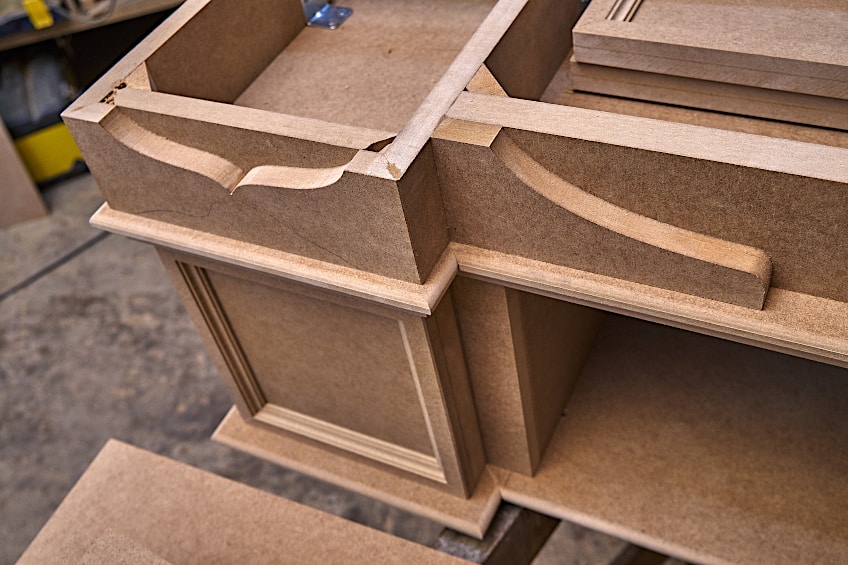
MDF and engineered woods in general became popular around the 1980s due to their affordability. However, there are a few drawbacks to using MDF that you should keep in mind. Commonly sold MDF boards will begin to disintegrate should they come into contact with water, and due to them having no grain, it can be exceedingly challenging to both paint and stain them.
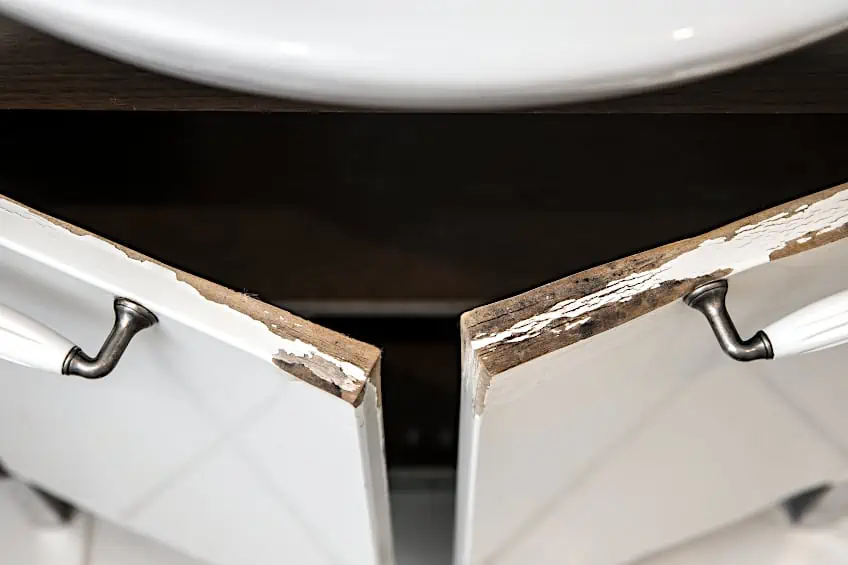
Keep in mind that MDF cannot be used interchangeably with a solid wood board. Only certain types and grades of MDF are suited to replace or substitute solid wood boards. This is especially important to remember if you intend to use MDF for construction applications, as most MDF boards are not suited for intense load-bearing scenarios.
Can You Stain MDF Board?
MDF can be stained! Although, it can be quite challenging to do so. Unlike solid wood boards, MDF does not have any grain to ensure that the wood stain is evenly distributed. This can result in a blotched, uneven finish due to the wood fibers having a somewhat random distribution and density across the surface of the board.
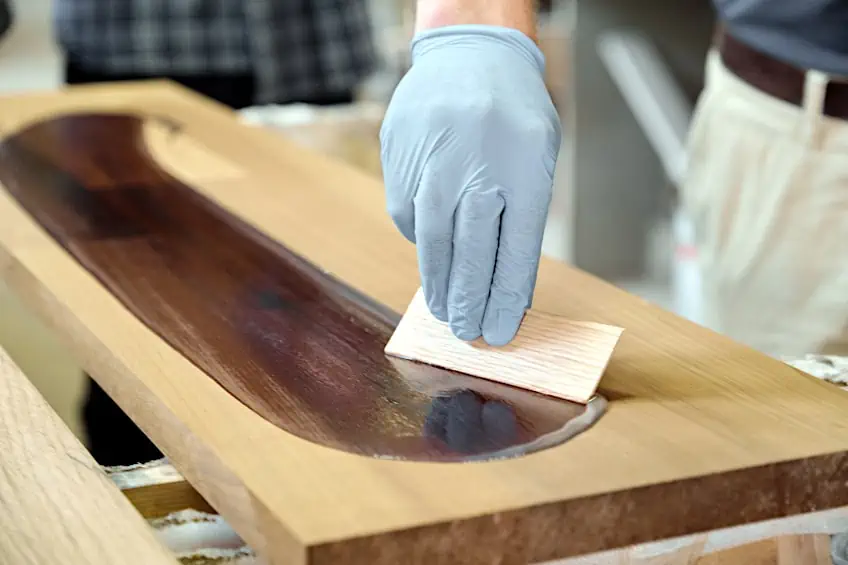
This means that it can take considerable time and effort to stain MDF. Is it worth it? Well, that’s entirely up to you. If you’re willing to put in the elbow grease, stained MDF can look just as good (if not better) than solid wood board when stained. This being said, let’s have a look at what type of stain works best on MDF and how to go about applying stain to it.
What Type of Stain Works Best on MDF?
Now that you know staining MDF can take some effort, you’re probably wondering what type of stain works best on it. There are loads of stain types out there to choose from including gel, water, and oil-based wood stain. Considering that MDF tends to absorb wood stains unevenly, you might be inclined to believe that a gel-based stain works best.
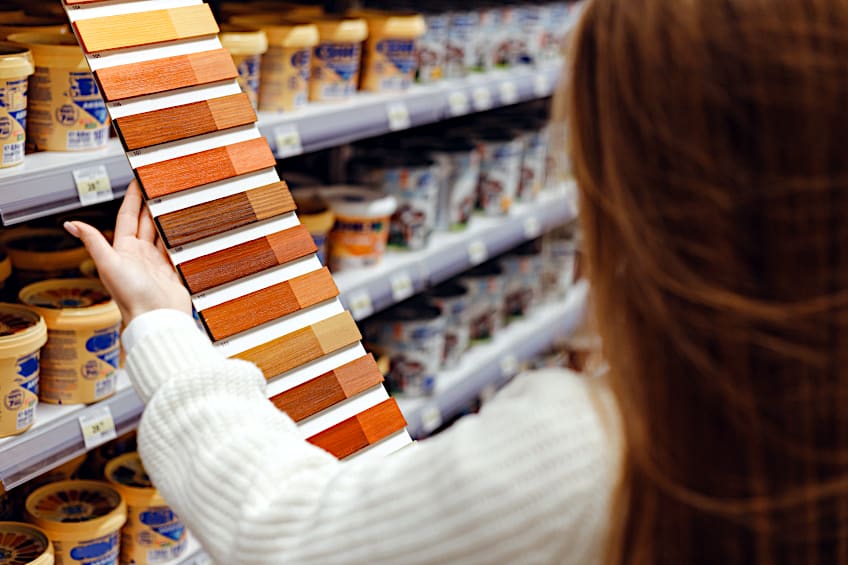
Funny enough, it’s actually an oil-based wood stain that tends to work best on MDF. Since MDF doesn’t have any wood grain most stain types tend to produce a muted and blotchy finish, but oil-based stains and even oil-based varnishes tend to produce a vibrant color that emulates the color and texture of the solid wood board.
Can you stain MDF with other types of wood stain? Yes, you can! However, you should keep in mind that it can take some trial and error to get desirable results using them. If you’d like to experiment with different stain types on MDF we recommend using some spare pieces of board to avoid ruining your primary workpiece.
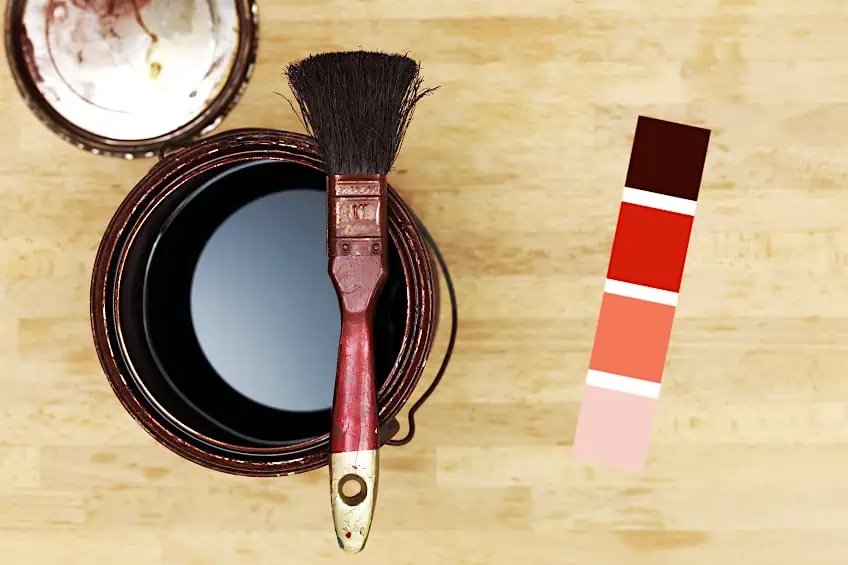
Wood stain isn’t the only wood treatment product that works in MDF either. Other products like oil-based varnish and wax products tend to do a pretty good job too. Again, we recommend practicing on some spare boards beforehand to get a feel for how these products interact with the wood before attempting to stain your actual workpiece.
The key to staining MDF regardless of the product you are using is to ensure that the board has been adequately prepared to receive the stain. Always keep in mind that MDF is not porous, which means that the board could entirely reject the stain, or the stain could oversaturate the wood fibers, resulting in a poor finish.
How to Stain MDF Boards
Wondering how to stain MDF boards? As we mentioned previously, the key to staining MDF lies in the preparation and technique used to stain it. There are a few ways you can go about staining your MDF board, all of which require different tools and techniques. To save you some time we’ve listed a few of them below as well as some of the things you’ll need to get started.
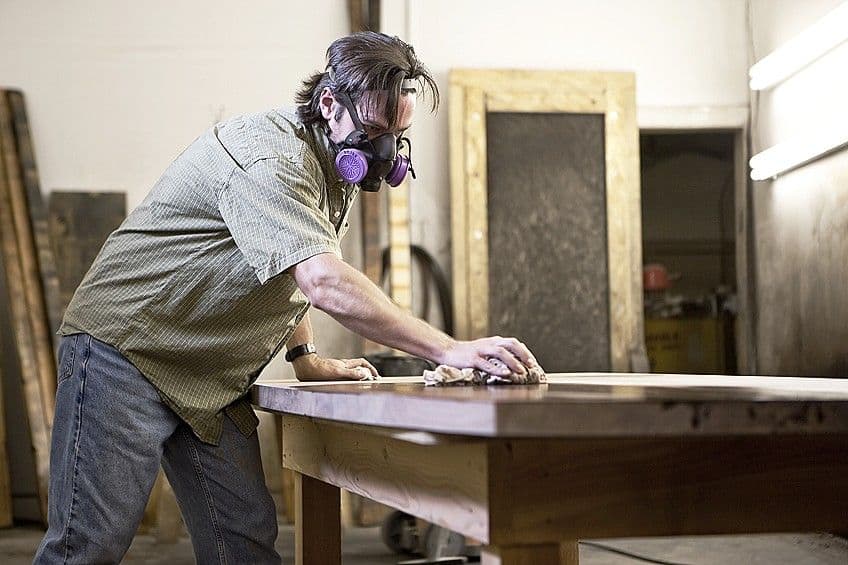
Using a Brush
One of the most popular methods of applying stain to MDF is simply by using a brush. The method is quite simple, once the board has been prepared, all that you need to do is dip your brush in some wood stain and apply your stain evenly to the surface of the board. This method is particularly useful when staining smaller MDF workpieces.
The only disadvantage of using a brush to stain MDF is that it’s fairly easy to over-apply your stain. As always, we recommend that you practice on a spare piece of board before attempting to stain your primary workpiece. You can also practice removing any excess wood stain by using a clean cloth and simply wiping any excess straight off.
Using the Ombre Method
The Ombre method is very similar to the rag method. All that you need to do is apply wood stain either directly to the surface of your workpiece or to the rag you’ll be using. Next, simply wipe the cloth across the surface of your workpiece until you’re satisfied with the color and distribution of your wood stain. This method minimizes the probability of you over applying the stain, especially if the stain is applied to the cloth first.
The advantage of using this method is that you can achieve a color gradient, which makes for a visually impressive finish. Additionally, since this method produces a lighter color compared to the brush method, you can add stencil designs or patterns to the surface of your MDF workpiece once the stain has dried, or use the stain to create these patterns, which is pretty cool.
Using the Pressure Washer Method
While it might sound counterproductive to use a pressure washer when applying wood stain, it actually helps the application process considerably. As you know, MDF has no wood grain and therefore doesn’t have a means of evenly absorbing the wood stain on its own. Give your workpiece a wash with a pressure washer before the stain is applied.
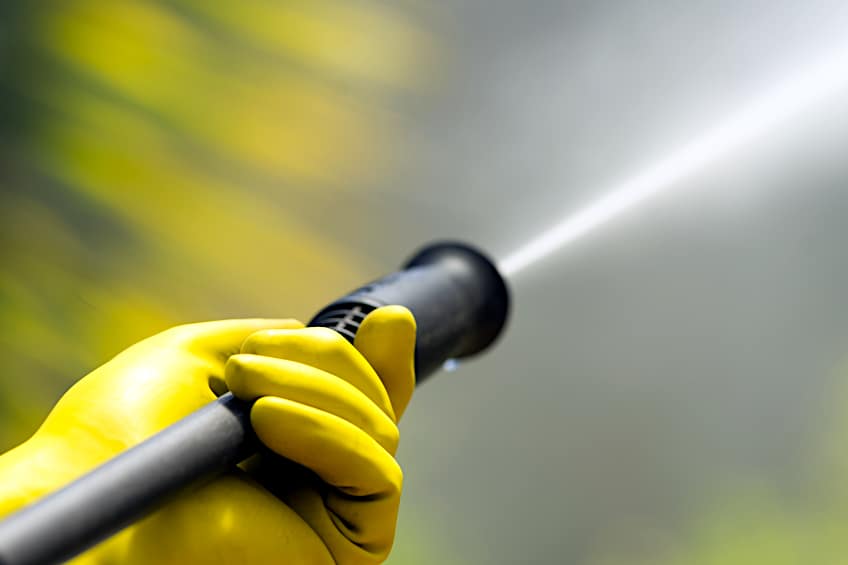
Pressure washing the surface of your MDF board allows you to even out the surface a bit. Once a stain is applied to the surface of the board it tends to create unique patterns on the surface thanks to the effect of the pressure washing process. If you’d like the appearance of wood grain on the surface of your MDF, this is one way of going about it.
Using the Cloth Method
We mentioned the cloth method previously, and as you can probably tell by the name, it simply involves using a cloth to apply your wood stain to the surface of your MDF. Applying wood stain using this method requires applying the stain to a clean cloth and rubbing it evenly across the surface of your board, pretty much the same way you would with varnish.
This method is simple, and it allows you the opportunity to add things like stencils and patterns to your workpiece’s surface. This tends to work really well aesthetically on smaller workpieces, as wood stain alone tends to leave them looking quite plain. Once the wood stain has dried, you can add other impressions using spray paint, resin, stickers, and anything else that tickles your fancy.
Using Aerosolized Wood Stain
When the wood stain was first conceived it was sold exclusively in liquid form. These days, thanks to advancements in aerosolized containers and production methods, we have managed to produce wood stains in an aerosolized form. Not only is this more convenient, but it makes applying wood stains that much easier for beginners and professionals alike.
Aerosolized stain is easy to apply and is readily available at most hardware stores. All that you need to apply this type of stain is to ensure that the surface of your workpiece is clean and apply the stain the same way you would spray paint or primer. Once the stain has had a chance to dry completely, additional coats can be applied to achieve a darker color.
How to Apply Wood Stain to MDF
Stained MDF can look incredibly unique and eye-catching if done correctly. However, if done incorrectly, it can leave a lot to be desired. This being said, here is a short tutorial detailing how to apply wood stain to MDF and achieve the best results. Before starting, ensure that your workspace is well-ventilated and that you’re wearing the appropriate personal protective gear. Here are a few things you’ll need to get started:
- Oil-based wood stain
- A drop cloth/some old newspaper
- Fine grit sandpaper
- Wood filler
- A paintbrush
- Sealer
- A paint tray
- Staining conditioner
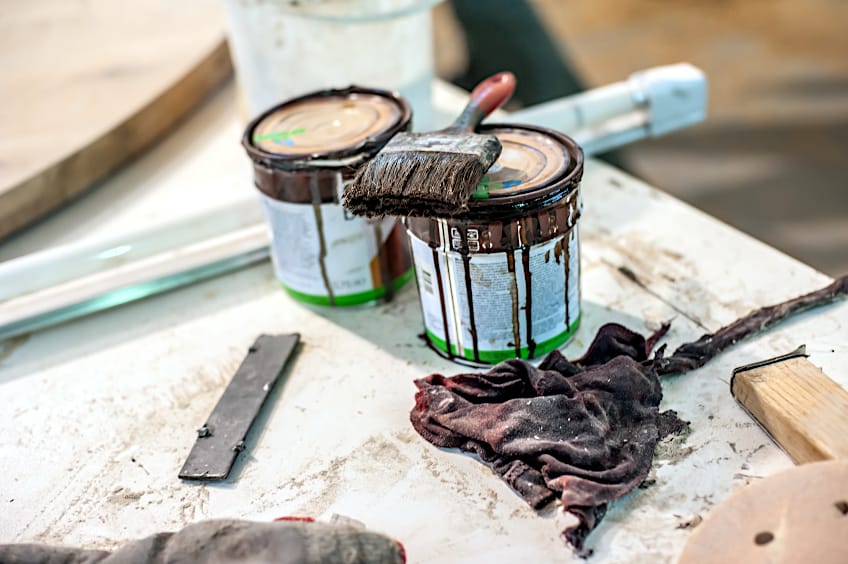
Prepare Your Workspace
Before you get started, ensure that your workspace is prepared for the staining process. Inhaling stain fumes can cause discomfort so ensure that your workspace is well-ventilated and has a consistent airflow in and out of the space. Next, lay down a drop cloth or some old newspaper on the floor of your workspace to ensure any stray droplets of stain won’t get onto your flooring.
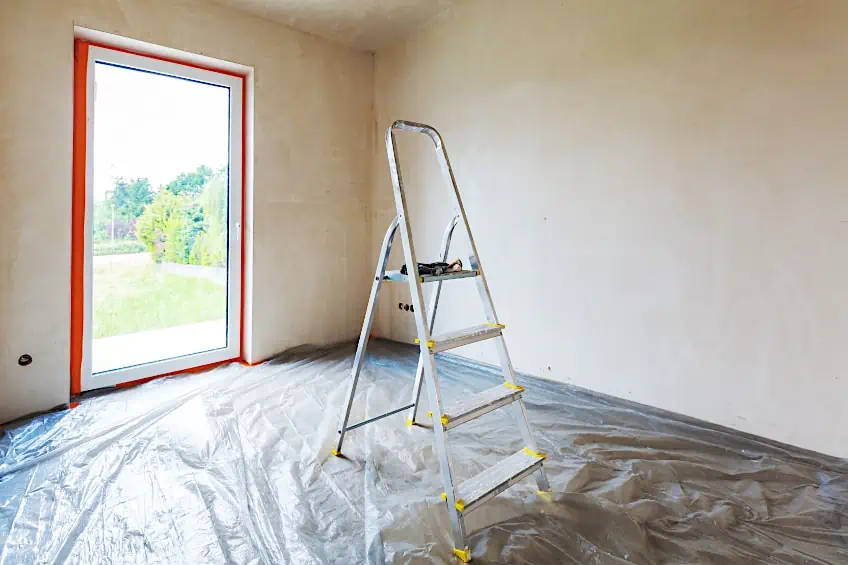
Finally, ensure that you are protected. We recommend wearing a face mask to ensure that you don’t inhale any fumes produced from the wood stain. Next, put on some gloves to ensure that you don’t acquire any splinters while preparing the MDF, and while you’re at it why not throw on some eye protection too? MDF creates a lot of dust when being sanded, so this will protect your eyes well ensuring your line of sight is unimpeded.
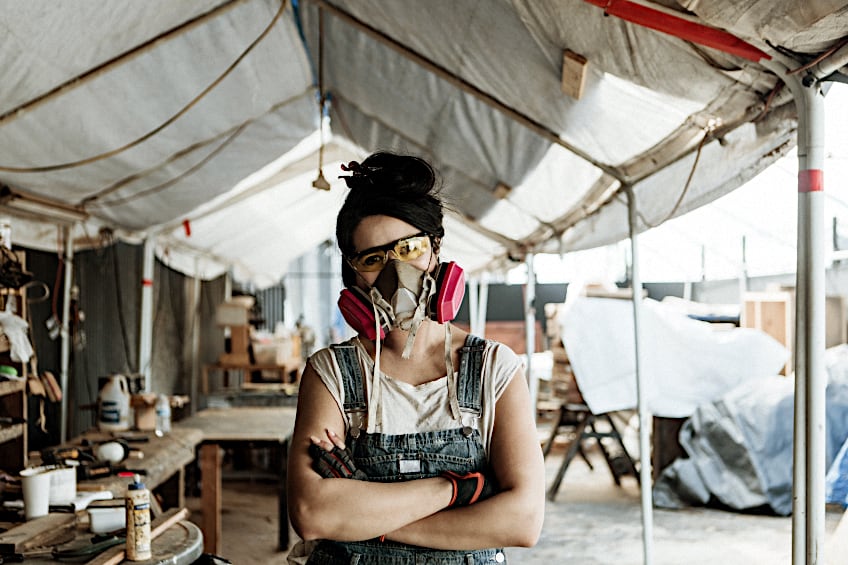
Prepare Your Workpiece
Clean the surface of your workpiece. You can do so with a damp cloth that has been dipped in some warm water. Lightly wipe the surface of your MDF board to remove any dust, dirt, or grime present on its surface. Once the board has dried completely, it’s time to start sanding. We recommend using an orbital sander and MDF tends to produce a lot of dust when sanded.
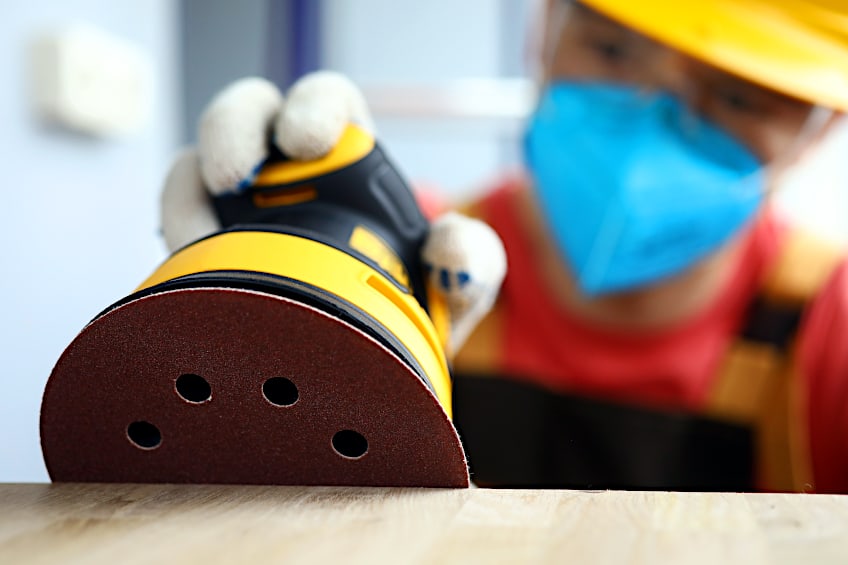
Sand the surface of your board as you would with any other wood surface. Ensure that you work from one end of the board to the other and that you work the surface evenly. Once you’re happy with the job you’ve done sanding, use some compressed air or a cloth to clean any excess wood particles off the surface of your workpiece.
Next, use some wood filler to fill in any gaps produced during the sanding process and allow it to dry and cure completely. Finally, apply your wood stain conditioner to the surface of your board with a brush in an even manner, and allow it to dry/cure for the manufacturer’s recommended time period before moving on to the next step in the process.
Stain Your Workpiece
Now for the part you’ve been waiting for. Pour some wood stain out into your painter’s tray and get some on your brush. Apply the stain to the surface of your workpiece, ensuring an even distribution over the surface. If you’re working with a rectangular workpiece, we recommend working from one end of the board to the other.
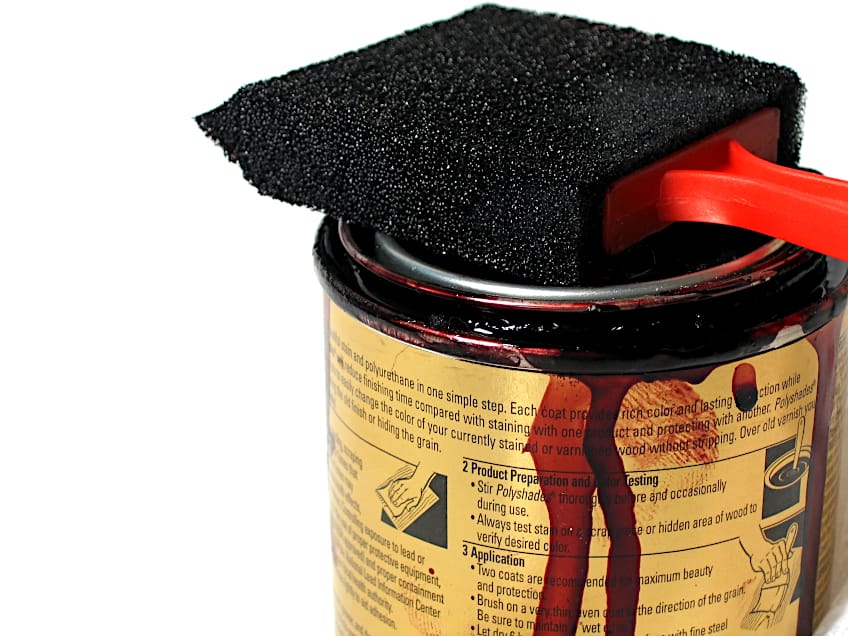
If you have a square workpiece you can do the same, but should your workpiece be circular or irregularly shaped, we recommend working from the edges inward, or vice versa. Once your stain has been applied, allow it to dry for the manufacturer’s recommended time period. Should you prefer a darker tone, simply give the surface a light sanding, and repeat the application process.
Seal Your Workpiece
Sealing your workpiece is optional, but considering that MDF tends to dent easily we recommend using an epoxy sealer to ensure that the surface of your workpiece lasts. All that you need to do is pour some sealer out into your painter’s tray, get some on your brush, and apply it to the surface of your stained workpiece. Allow the sealer to dry and cure for the manufacturer’s recommended time period, and your workpiece will be ready for use.
Now that you know what MDF is, whether it can be stained, some of the methods that can be used to stain it, and how to stain MDF using the brush method, it’s time for you to get out there and put your newfound knowledge to the test! Remember that MDF produces a lot of dust when being sanded, so always ensure that your workspace is well ventilated and that you’re wearing the appropriate personal protective gear.
Frequently Asked Questions
What Are the Disadvantages of MDF?
MDF is popular in various industries due to its affordability, versatility, and availability, but it’s not always the best material for the job. MDF has a number of disadvantages, as it can be heavy, difficult to stain, and tends to absorb a lot of water, which can cause the board to disintegrate.
What Does Stained MDF Look Like?
MDF, like many engineered woods, is devoid of wood grain. Due to this, staining MDF can be challenging, and if done incorrectly, can result in a blotchy, uneven finish. What does stained MDF look like if done correctly then? MDF typically looks darker and more distinct in appearance when prepared correctly before a stain is applied.
Can MDF Be Washed?
You might be hesitant to wash MDF considering that it is known for absorbing and retaining water. However, should you find that your MDF workpiece could use a clean, you can use a clean cloth dipped in lukewarm water to get the job done.

I have been into woodworking since 2005 and woodturning since 2011. Because of my love for wood and woodworking, I started woodhappen.com to teach other enthusiasts about how to finish and seal wood, the best woodworking tools, the different types of wood, and everything else related to woodworking! Read more about me here.

